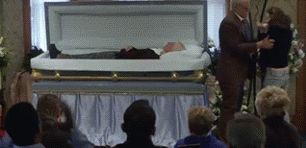They baffle the authorities by carrying out a number of high stakes robberies in front of a live audience seemingly by magic and as the stakes get higher, the illusions become more and more dangerous.
It's concept is unusual for the genre due to the lack of general violence and it focusses on the intellect behind illusions and the 'magic' craze that is popular at live venues in cities such as Las Vegas.
The bank robbery committed using illusion cannot be proved but the authorities know it was the troupe which creates a public game of cat and mouse with the troupe being two steps ahead at all times.
This chase is the only true staple of the crime thriller drama but what is more unusual (yet not entirely unique) is that the film focuses on the criminal element rather than the police.
Silence of the Lambs is the archetypal crime thriller as it is often regarded to be the film that set the tone for the genre and the with it the standard for which others are set to.
It features FBI agent Clarice Starling attempting to decipher the cryptic clues given by imprisoned cannibal serial killer, Hannibal Lecter to catch a serial killer called Buffalo Bill.
This single film created the Hannibal Lecter film franchise and inspired many other intelligent serial killer material that focuses on the killer him/herself.
The staple of the chase is present, along with the confrontation with a murderer but it's unique qualities is the relationship between Starling and Lecter that is synonymous with the franchise and book series.
 The film Sin City is based on a collection of stories from a noire comic book.
The film Sin City is based on a collection of stories from a noire comic book. The only colours used in both are black, white, red and a few exceptions intrinsic to the story lines.
It is set in a crime ridden city nicknamed Sin City and it follows all the generally archetypal crime thriller conventions.
These include: chases, focus on private detectives, dark underworld themes, sexual elements, violence and extreme violence.
Being based on an amalgamation of all the crime thriller elements, the film is considered the epitome of the genre.





.jpg)
















